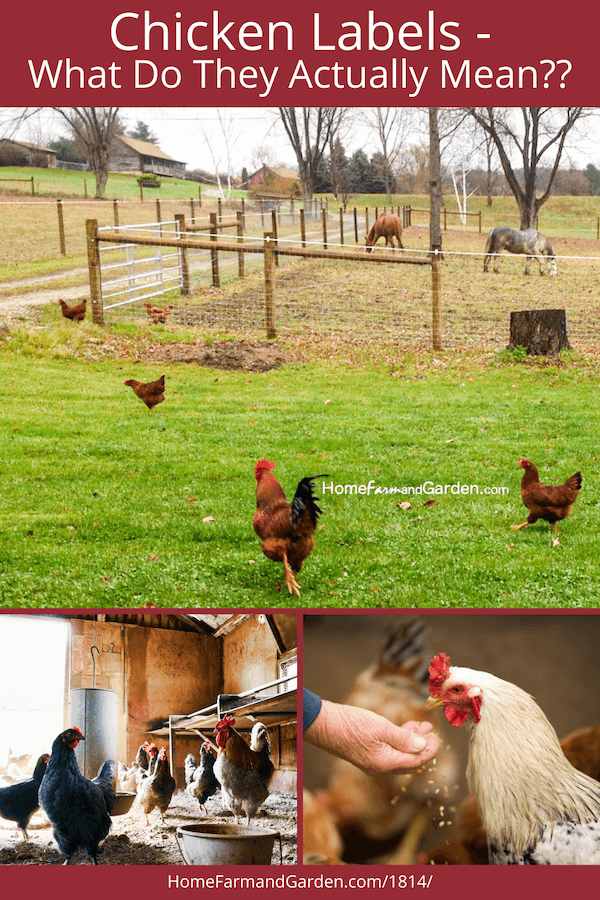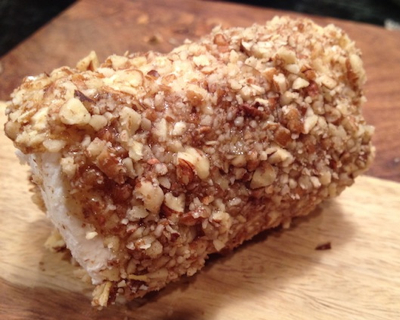
Please note: This article was originally published in 2014. Current laws and regulations may be different.
Few things get me as riled up as what is going on with food labeling these days. Thanks to legislators who care more about catering to corporate interests than protecting the general public, it’s tough to know exactly WHAT you are buying when you go to your local grocery store. [Putting soap box away]
The U.S. Department of Agriculture (USDA) is responsible for the “official” designations you see on your packaged chicken labels. On the other hand, some labels are just there to help sell more product.
That said, it’s a good idea to educate ourselves as to what chicken labels actually mean. In other words, what exactly are you getting when you pick up a package of chicken labeled “free range,” “farm raised,” “organic,” “natural,” or “no hormones added?”
What Chicken Labels Mean:
Free Range
This label conjures warm and fuzzy images of chickens allowed to freely range about a wide open area as they go about their day.
Yeah. Not so much.
Defining this label is challenging because the USDA doesn’t have a blanket rule for all chicken farms that claim to be free range. Each farm must make their own case and present it to the USDA for approval.
Basically, the “free range” designation means the chickens must have access to the outdoors for “part of the day.” Depending on how this is interpreted – outdoor access for “part of the day” could mean as little as 15 minutes. Plus, the chickens are not forced outdoors – so they may not be as ‘free ranging’ as you might think.
Also, what these chickens are fed is not part of this designation. Therefore, a “free range”designation from the USDA does not mean the chickens are organic.
Organic
This label is more complicated. To begin, all chicken labeled ‘organic’ must also be free range. Once this is established, then the other rules come into play, and the USDA has very specific rules regarding production. Chicken can only be labeled organic if the farm adheres to these strict rules. Also, according to the USDA, having an organic designation doesn’t mean the product is safer or healthier than chicken without the organic label.
Farm Raised
This designation always reminds me of the tagline adopted by a big dairy in our area – “The Dairy in the Country.” Really?? That’s your unique selling proposition???
I digress… but if you scratch your head a little when you see this label, you’re not alone. Aren’t all chickens raised on farms? This label could be slapped on every chicken package in the store – which means if you see it, it doesn’t mean anything.
However, if you are eating at a restaurant and you see ‘farm-raised chicken,’ it usually indicates that the chicken was raised locally. Be sure to ask your waiter or the restaurant manager, however – especially if they are charging a higher price for their ‘farm-raised’ chicken.
Natural
Again, this is a label that can be placed on every package of chicken in your local grocery store. Here’s the thing… producers don’t need to add coloring, preservatives or other artificial ingredients when they process the chicken. This is because getting the chicken from the farm to the store requires minimal handling.
Don’t pay more for a chicken labeled ‘natural’ since all producers could sport the same label if they want. It’s just a marketing hook.
No Hormones Added
This one annoys the heck out of me. “No hormones added” is one of the least understood labels on chicken today.
The fact is, in the United States, the FDA prohibits the use of added hormones in chicken.
Every package of chicken can properly be labeled ‘no hormones added’ – to be fair, it must also include a small line saying no hormones are used in any poultry products, stating clearly that they are not unique in making this claim.
Fortunately, marketing with this label seems to be falling out of favor as consumers learn the truth about added hormones:
There are no added hormones, ever.
Raised Without Antibiotics
Overuse of antibiotics – especially among children – is now a very serious concern. Naturally, consumers want to be reassured that they aren’t getting doses of hidden antibiotics in their food.
To address this concern, the USDA allows the phrase ‘raised without antibiotics’ to be used on packaging if the chicken was, in fact, raised without the use of antibiotics.
However, you may see marketing outside of the packaging itself using the term ‘antibiotic free’ since only the packaging is regulated by the USDA. The concern about antibiotics in chicken is debatable since the USDA requires certain procedures for chicken production and packaging that eliminates any residual antibiotics from the chicken.
However, if you are concerned with antibiotics in your food, then look for the USDA label ‘Raised Without Antibiotics’ on the chicken packaging.
Bottom Line: Be sure to read chicken packaging labels carefully – and realize that some of the terms used on the label are only there for marketing purposes. (e.g., “farm raised” or “hormone free” – if chicken sporting these labels are priced higher than those without those terms, you’re paying for a savvy marketing angle).
Other labels, however, are official USDA designations (e.g. “organic”) and cannot be manipulated as easily by clever marketing teams.
If all this makes you uncomfortable, consider finding a local farm that sells chicken on a smaller scale. They will still need to follow the labeling guidelines established by the USDA – but when you know where your food is coming from, you can get a much clearer picture of what you are feeding your family.
Did you find this article helpful? If so, please sign up below to receive free weekly updates!
 Your Trusty Garden Journal
Your Trusty Garden Journal